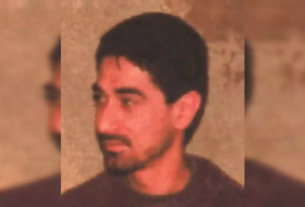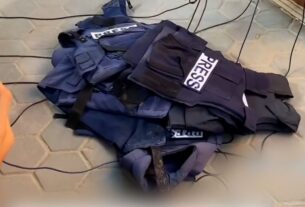The Vatican has officially verified that Cardinal Juan Luis Cipriani Thorne, Archbishop Emeritus of Lima, Peru, remains subject to correctional measures following allegations of sexual abuse that date back to the early 1980s. These measures were first assessed shortly after his abdication as Archbishop of Lima and reflect the Vatican’s ongoing sweats to address allegations of abuse within the Church, indeed at its loftiest situations.
According to a statement released by Vatican News, the correctional measures against Cardinal Cipriani circumscribe his public conditioning, dictate his hearthstone outside Peru, and limit his use of ecclesial button. The Holy See’s evidence, issued on January 26, 2025, by Matteo Bruni, Director of the Holy See Press Office, came in response to renewed media attention girding allegations filed against the Cardinal in 2018.
Cardinal Cipriani, a prominent figure within the Church and a well- known member of Opus Dei, faced significant allegations that led to the Vatican’s warrants. Opus Dei, a unqualified institution innovated in Spain, emphasizes the pursuit of particular Christian godliness through one’s everyday life. Cipriani’s association with this association brought him considerable influence, particularly in Latin America, where he was frequently seen as a loyal protector of traditional unqualified values. still, the allegations against him have cast a shadow over his heritage.
The allegations that led to the warrants reportedly stem from incidents of abuse allegedly committed in the early 1980s, long before Cipriani’s rise to elevation as the Archbishop of Lima. In light of these allegations, the Vatican assessed a series of correctional measures aimed at icing responsibility and securing the Church’s integrity. Among these measures is the demand for the Cardinal to leave his home country of Peru and establish a stable hearthstone abroad.
Since the perpetration of these restrictions in 2019, Cardinal Cipriani has been abiding in Madrid, Spain. The Holy See has reportedly granted him limited warrants on occasion, but the restrictions remain forcefully in place, reflecting the graveness of the allegations.
In a public statement addressing the allegations, Cardinal Cipriani denied any wrongdoing, asserting that he’d noway committed abuse in 1983 or at any other time. He expressed his surprise upon first literacy of the allegations in 2018, when a formal blameworthiness was filed against him. The ensuing time, he was informed by the Apostolic Nuncio in Peru that the Vatican’s also- Congregation for the Doctrine of the Faith had delved the claims and decided to put warrants.
These warrants included restrictions on his capability to exercise his clerkly ministry, a accreditation to live outside of Peru, and limitations on making public statements or sharing in high- profile Church conditioning. While Cardinal Cipriani has complied with these measures, he has also raised enterprises about the process and the recent public exposure of information he claims began from nonpublic Vatican attestation.

Cipriani expressed particular dismay over what he described as the unhappy release of sensitive information, which he believes undermines the confidentiality of the Church’s internal processes. nevertheless, he reaffirmed his commitment to the Church’s charge and his belief in the principles of justice and responsibility.
Despite his denial of the allegations, the Vatican has emphasized its commitment to addressing cases of abuse with the utmost soberness. The Church has faced mounting pressure in recent times to demonstrate responsibility, particularly in cases involving elderly church members. The correctional measures assessed on Cipriani emphasize the Vatican’s sweats to address these challenges and rebuild trust among the faithful.
In his statement, Cipriani reiterated his commination of all forms of abuse, particularly those involving minors and vulnerable individualities. He expressed his solidarity with victims, affirming his prayers for their mending and well- being. At the same time, he maintained his innocence, describing the allegations against him as unwarranted and asserting that he has noway engaged in vituperative geste
at any point in his life.
Cipriani also addressed his appellants directly, stating that he harbors no ill will toward them and has chosen to forgive those who have brought forth the allegations. This station, he explained, reflects his commitment to the training of the Church, particularly the call to remission and conciliation. still, his statement did little to quell the contestation, as critics have called for lesser translucency regarding the case.
The Vatican’s running of the allegations against Cipriani is part of a broader trouble to defy the issue of sexual abuse within the Church, which has been a patient and deeply dangerous problem for decades. Pope Francis has made combating abuse a central focus of his papacy, introducing measures to hold Church leaders responsible and establish clearer protocols for responding to allegations.
While Cipriani’s case remains a source of division among Catholics, it also highlights the challenges the Vatican faces in balancing justice, translucency, and confidentiality. The decision to put warrants on a figure as prominent as Cipriani signals the Church’s amenability to take action, indeed when doing so involves elderly members of the church.
As the case continues to attract attention, numerous spectators have called for a more detailed account of the Vatican’s disquisition into the allegations. lawyers for abuse survivors argue that lesser translucency is necessary to insure responsibility and help analogous incidents in the future. They also emphasize the significance of supporting victims, whose voices frequently go unheard in similar cases.
For now, Cardinal Cipriani remains in Madrid, where he’s anticipated to continue clinging to the restrictions assessed by the Vatican. His case serves as a memorial of the Church’s ongoing sweats to address its worried history with abuse and its commitment to fostering a culture of responsibility. While the outgrowth of these sweats remains uncertain, the Cipriani case underscores the need for continued alert and reform.
As the Catholic Church seeks to heal from once injuries and rebuild trust among its members, cases like this highlight the significance of prioritizing the voices of victims and icing that justice is served. The Vatican’s conduct in this case, while controversial, represent a step toward lesser responsibility and a reaffirmation of the Church’s commitment to addressing abuse at every position.



